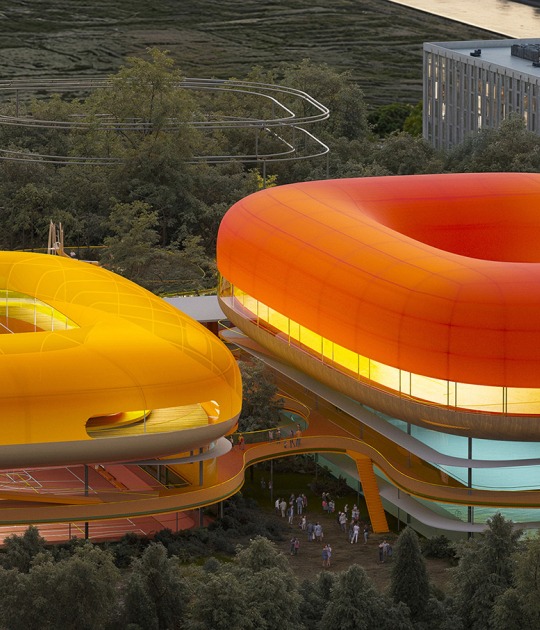Described by Studio Libeskind as a vertical stalactite, the museum's monolithic forms were inspired by ancient hand axes that were the first tools of early humans. Inside, the building will house a series of interactive, “architecturally dynamic and provocative” exhibition spaces that will “enhance and enliven” the artifacts, said Daniel Libeskind in a statement.
Libeskind and Dr. Leakey also launched a crowdfunding campaign for the museum, which has currently raised $4.06 million out of a $7 million goal. The museum is scheduled to break ground in 2022 and open to the public in 2024.
Descripción del proyecto por Studio Daniel Libeskind y Richard E. Leakey
Ngaren invites visitors to join in a journey into the past.
Our understanding of the past is critical to defining our possible future. Through state of the art technology, Ngaren, the Museum of Humankind will foster that understanding, providing an unprecedented educational and scientific experience for visitors. Ngaren will invite visitors to join a journey into the origins of the universe, and the story of our own planet where the relentless forces of climate change are the backdrop to the evolution and extinction of species, large and small. Visitors will learn the story of humankind; a story where human evolution was not inevitable, where Africa plays a pivotal role; a story in which we are all migrants, in which our differences are insignificant and irrelevant. From the earliest tools of our ancestors to the insights of modern science, Ngaren will show visitors how humankind has rewritten the rules of the planet—and how our behavior must change if we are to survive here. Ngaren challenges us to learn from the past to build a better future.
Ngaren draws upon decades of combined international experience. It is spearheaded by Dr. Richard E. Leakey, who has demonstrated an unparalleled life commitment to uncovering the scientific truth about human origins, and to the people of Kenya. Partnering with Leakey is celebrated architect Daniel Libeskind, known for designing landmark cultural buildings around the world.
The building will be a net-zero facility. The museum will be a must-visit destination; a pilgrimage for all global travelers curious to know who we are, and the forces of change that brought us to this point. Your contributions on rabble will provide Ngaren seed funding for architectural design, interpretive and master planning, exhibition research and design, and the development of exclusive, cutting edge experiential educational content. This support is integral to Ngaren’s mission to shift paradigms by addressing critical issues facing the world today: climate change, sustainability, environmental awareness, understandings of race and ethnicity, extinction, technology, and more. Ngaren will make accessible complex scientific concepts by bringing them to life, incorporating technology, art, and exhibitions that educate and inform. Further, your contributions will help the Terra Conservation Initiative provide sustainable development support to surrounding communities, recognizing the museum’s dependence on the site’s history, present, and future.

























